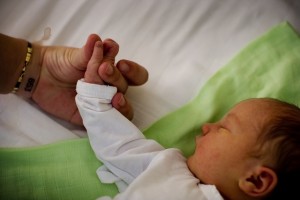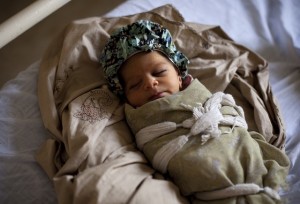每年近300萬名新生兒可望獲救
2014-05-20
美國紐約/香港,2014年5月20日——今天,醫學雜誌《刺針(The Lancet)》在聯合國兒童基金會(UNICEF)總部發佈一系列具開創性的論文,指出近300萬名出生1個月內夭折的嬰兒,特別是最脆弱及難以取得服務的兒童,若在出生時得到優質的護理,大多數都能倖存。


|
新生兒夭折高佔5歲以下兒童死亡人數的44%,比1990年的比例還要高。這些夭折的兒童往往是最貧困、最弱勢的一群。
UNICEF全球衞生項目負責人米奇.喬普拉博士( Dr Mickey Chopra )說:「我們看到在拯救5歲以下兒童生命所取得的顯著進展,但最幼小、最脆弱的兒童仍面對重大困難,他們需要關注和資源。把焦點放在剛分娩至 出生1小時這個關鍵時段,可增加母嬰存活的機會。」 根據UNICEF的報告,每年有290萬名嬰兒在出生後28天內夭折。另有260萬名嬰兒胎死腹中,其中120萬名是在母親分娩過程中,心跳停止而死亡。分娩後首24小時對產婦和嬰兒來說,都是最危險的時期,近半數母嬰死亡都在期間發生。
《刺針》雜誌「每個新生兒」系列論文提出了最有效拯救新生兒生命的方法,包括母乳餵哺、新生兒復甦法、針對早產兒的「袋鼠護理法」(母嬰皮膚持續接觸),並可有效預防及治療感染。更多資金投入、充足設備對拯救新生兒生命都十分重要。
在拯救新生兒生命工作上取得最大進展的國家,都分別特別關注母親與5歲以下兒童的全面保健計劃。例如盧旺達,在撒哈拉以南非洲地區中取得顯著進 展,該國自2000年以來,新生兒死亡人數已減少了一半。此外,一些低、中收入國家也透過培訓助產士和護士,為最貧困的家庭提供優質的分娩護理,取得了顯著成效。
|
|
一項在51個新生兒夭折率最高的國家進行的調查發現,如果所有人都能獲得該國最富裕一群所接受到的優質護理,每年將可避免60萬人死亡,相當於減少近20%死亡人數。 |
每年新生兒夭折人數最多的國家集中在南亞和撒哈拉以南的非洲地區,其中印度(779,000)、尼日利亞(267,000)和巴基斯坦(202,400)位居前列。在情況最險峻的國家,為母嬰健康每投放港幣7.8元(1美元),就可產生達9倍的社會和經濟效益。

|

|
UNICEF和世界衞生組織將在下月推出「每個新生兒行動計劃」,以在2035年前消除可預防的產婦和兒童死亡。
《刺針》的「每個新生兒」系列論文由UNICEF、倫敦衞生與熱帶醫學院和巴基斯坦阿迦汗大學的專家等共同撰寫。
「每個新生兒行動計劃」將於UNICEF就聯合國《兒童權利公約》25周年倒數6個月時展開,以強調兒童工作上取得重大進展之餘,最弱勢兒童仍要面對的挑戰。









